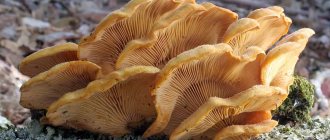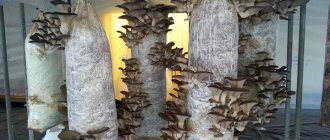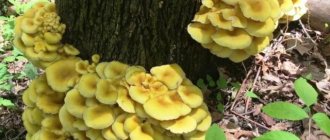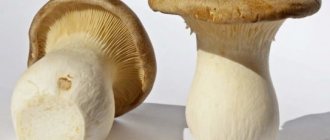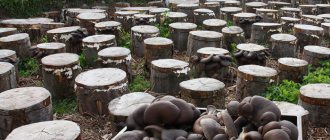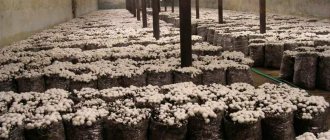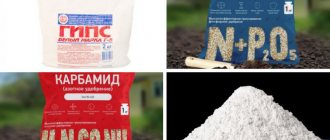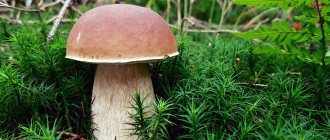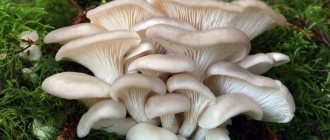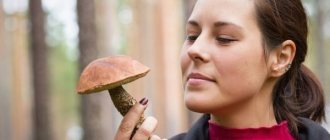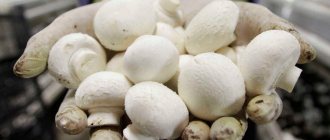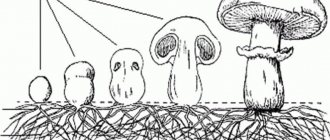Growing mushrooms seems to many to be a very comfortable business. However, this is not always the case. A lot depends on the choice of the type of mushrooms grown, because different types require different conditions, which directly affects their yield.
In addition, they have different prices on the market, so even their varieties growing in large quantities may not lead to the long-awaited return on investment. But that’s not all: many people forget that the science of biology classifies mushrooms as a separate kingdom with its own laws. In particular, we are talking about the methods of their reproduction - by spores, and this is where very serious problems can arise.
In this regard, it seems interesting and useful to thoroughly consider the technology of growing oyster mushrooms as a business. We will evaluate the arguments for and against, and also take into account the feedback from the owners of such farms. In general, we will formulate the main provisions of the business plan for this business activity.
Project Summary
The goal of this project is to grow mushrooms (oyster mushrooms) for the purpose of selling them fresh in Rostov-on-Don with a subsequent increase in production capacity and expansion of the product range with other types of mushrooms. Oyster mushroom is in constant demand among the population, it is unpretentious to temperature fluctuations, humidity and light levels, is easy to care for, and has rapid germination. The costs of growing oyster mushrooms are not high, thanks to which the business has good profitability indicators.
The production has unlimited resources in raw materials (straw, sawdust, corn cobs, sunflower seeds, seed husks, etc.) and is located in an ecologically clean area, 15 km from the city, due to which the costs of transporting products without losing their quality for the end consumer are minimal.
The process includes 4 main stages:
- Purchase of seed material (mycelium);
- Substrate preparation (bag with nutrient medium and mycelium);
- Mushroom cultivation;
- Implementation.
The cost of the project will be 202,500 rubles, which will be taken from personal savings. The funds will mainly be used for the creation and equipment of a greenhouse on the territory of a summer cottage, which is owned, as well as the purchase of mycelium, fertilizers and other consumables. The payback period for the project from the start of production will be 9 months.
| Key financial components of the project | Indicators |
| Net profit of the project*, rub. | 54 919 |
| Return on sales, % | 27,26 |
| Profitability index, PI | 11,74 |
| Payback period, months | 9 |
| Discounted payback period, months. | 9 |
*data for 12 months from the start of sales of the work
The duration of the preparatory part of the project will be 2 months. The first harvest is planned to be obtained 40-50 days after planting.
Enterprise registration
Before starting work, you should register your business. To do this, you need to select the OKVED code 01.12.31.
This type of business implies three options for a legal form: individual entrepreneur, LLC or peasant farm, that is, a peasant farm. All three have their pros and cons. A form such as personal subsidiary farming will not be suitable in this case.
IP
Makes it possible to grow mushrooms and sell the harvest.
To register, you will need to pay a state fee of 800 rubles, submit an application to switch to the simplified tax system or unified tax system, and also prepare an application in form No. P21001, which will need to be certified by a notary.
You should worry about photocopies of all significant pages of your passport in advance.
OOO
Gives the right to attract investment through loans for agriculture and through government programs.
To register, you need to pay a state fee of 4,000 rubles, submit application No. P11001, prepare the charter of the LLC and a decision on its opening, have copies of the passports of all founders certified by a notary, and write an application for the transition to the chosen form of taxation.
The authorized capital of the enterprise must be at least 10,000 rubles.
Profitability of growing mushrooms (oyster mushrooms)
Oyster mushroom is a cultivated mushroom. The market for cultivated mushrooms, unlike the market for wild mushrooms, is easy to calculate. Until 2014, the largest share of the domestic market (about 85-90%) was occupied by imported products. The volume of Russian production in 2014 was limited to 8.02 thousand tons of mushrooms. However, already in August 2014, mushrooms came under embargo. Imports began to decline across all items. Foreign manufacturers began to leave the market, making room for Russian entrepreneurs. According to the magazine “School of Mushroom Growing”, over the first 9 months of 2015, Russian mushroom growers increased oyster mushroom production by 17% compared to the same period last year.
Similar trends are observed in the production of other mushrooms, in particular champignons. As a result of the devaluation of the ruble, selling prices for cultivated mushrooms increased. Today, to cover the market deficit and move to full import substitution, at least 158 thousand tons of mushrooms will be required. The current market conditions, as well as the weak level of competition, encourage the opening of our own production.
The production itself is located on the territory of a summer cottage, 15 km from Rostov-on-Don. The area of the greenhouse and the premises in which the process of growing mushrooms takes place is 60 square meters. meters. To grow mushrooms, seed material (mycelium) is purchased from a specialized company, the cost of which is 50-55 rubles. per kilogram. Next, the substrate is prepared on site and the process of growing oyster mushrooms is carried out, ensuring the required level of humidity. Raw materials for preparing the substrate are prepared independently or partially purchased (the cost of 1 ton of straw is 2 thousand rubles). The duration of one production cycle is about 40-50 days. The product is sold at a non-stationary retail outlet in the food market of Rostov-on-Don.
Since at the initial stage the enterprise is focused on a small volume of production (about 1 ton of mushrooms per month), there will be no need for full-time or hired personnel for maintenance. The main responsibilities, including the purchase of mycelium, planting, fertilizing and collecting mushrooms, are carried out by members of the owner's family. The business owner is directly involved in the main production processes and also carries out retail trade in the vegetable market. The form of ownership chosen was an individual entrepreneur with a simplified taxation system - 6% of the income received.
The process of germination of blocks with a substrate component
Experts call this process incubation. It lasts from fourteen to eighteen days. During this time, the entire prepared block substrate sprouts mycelium. For this period, light and ventilation are not particularly important. The optimal microclimate consists of maintaining a temperature of twenty-four degrees and humidity not higher than seventy-five percent and not lower than ninety. If the temperature in the substrate is higher than the temperature in the room, the walls will begin to become covered with condensation.
This problem is fraught with many troubles. A crust (stroma) may form on the mycelium, which will significantly reduce the yield of future mushrooms. It can also appear as a result of overheating of blocks with a substrate or an excess of introduced mycelium.
Violation of the microclimate can also lead to the appearance of mold, leading to the death of oyster mushrooms. It manifests itself by the appearance of orange, black and green spots on the bags with mycelium. If this happens, the company’s employees remove the affected bags, ventilate the room and level the microclimate to the required standard.
Product description (oyster mushrooms)
Oyster mushroom is an environmentally friendly product, for the cultivation of which no chemical treatment is used. Unlike other popular cultivated mushrooms - champignons, which grow on rotted manure, oyster mushrooms prefer trees. The popularity of this mushroom is explained by the various methods of its preparation. Oyster mushrooms can be fried, boiled, salted, pickled. Oyster mushrooms are also actively used as an ingredient in various dishes and added to salads. Oyster mushrooms are especially in demand in the cold season, when the population’s own mushroom reserves are exhausted.
Oyster mushroom not only has excellent taste, but is also good for health. Oyster mushroom reduces cholesterol levels in the blood. Oyster mushroom juice prevents the development of E. coli. These mushrooms are low in calories (about 38 kcal fresh). Oyster mushrooms contain a large amount of carbohydrates and contain vitamins D2, E, C, B, PP. These mushrooms also contain enzymes that burn fats and glycogens. The pulp of the mushroom contains calcium, iodine, potassium, iron, biotin and thiamine. Another beneficial property of oyster mushrooms is considered to lower blood sugar levels. Eating oyster mushrooms helps prevent the development of diseases such as atherosclerosis, hepatitis, stomach ulcers and cholesticitis. Doctors also recommend eating oyster mushrooms for people suffering from bronchitis or undergoing chemotherapy. The main disadvantage of oyster mushrooms
Its fragility is considered, and therefore it is difficult to transport this mushroom over long distances. Fresh, unrefrigerated mushrooms are considered a very delicate cargo that requires special temperature conditions and the fastest possible delivery. Oyster mushrooms also have a rather weak mushroom aroma. If oyster mushroom spores enter the lungs, they can cause allergies.
It is planned to ensure the quality of the product and safety for end consumers through the purchase of certified mycelium, disinfection of production premises and equipment, as well as through the use of modern production technologies.
Growing oyster mushrooms is a virtually waste-free production, since the used substrate is used as a biologically active additive, which is used to feed pigs, as well as fertilizers for gardeners. The spent substrate is planned to be sold as an additional source of income.
Sales and marketing in the supply of oyster mushrooms
The main requirement of consumers for products of this type is freshness, which determines quality. The location of the mushroom farm is 15 km. from the place of sale allows you to organize transportation using your own transport (Lada Largus van) without loss of quality. Products are sold at food and vegetable markets in Rostov-on-Don. No special packaging is required for mushrooms. Plastic boxes are used for transportation.
The price of products is based on the material costs of production and fuels and lubricants, as well as the price of competitors, which on average in the city is 150 rubles. per kg. As a competitive advantage, at first it is planned to set a retail price of 140 rubles. per kg. Depending on the level of demand and other factors (for example, devaluation of the ruble), an increase or decrease in selling prices is possible.
As a method of increasing sales, it is planned to use advertising on the Internet to attract wholesale companies.
Selecting a sales market
Among the most obvious options:
- Independent sale in markets. In this case, you will have to worry about finding a free retail space, making and correctly placing advertising, and attracting the attention of potential buyers. In this case, sales proceed at a retail pace. The advantage is the ability to set your own prices, keeping an eye on your competitors, if any.
- Sales through grocery stores and supermarkets. In every fairly large city there is a retail chain or a separate point that is interested in the wholesale purchase of mushrooms. Unfortunately, most often they offer very low prices. Over time, it will be possible to switch to more favorable terms of cooperation, and the accumulated base of regular customers will remain with you, even if you break off cooperation with the outlet.
- Sales to restaurants. Mushrooms are traditionally in great demand in restaurants. The reason is simple - such establishments cook only from the freshest products. Cooperation will make it possible to quickly and profitably sell large quantities of mushrooms. The rest can be sold using the first or second method.
Needless to say, no matter what option you ultimately decide to resort to, the mushrooms grown must be of the highest quality.
Oyster mushroom production plan
Geographically, the mushroom farm is located 15 km from the city of Rostov-on-Don, due to which the delivery time of mushrooms to the place of sale is no more than half an hour. The process of growing mushrooms takes place in an ecologically clean rural area, on the territory of a summer cottage. Business technology can be divided into several main stages:
At the first stage
Mycelium is purchased from specialized laboratory companies. The criterion for choosing a supplier is the availability of relevant documents, customer reviews, quality and affordable cost of products (50-55 rubles per kg). The purchase of mycelium is not made once, but several times a year, since the shelf life does not exceed 3-4 months. At the initial stage, it is planned to purchase mycelium from different suppliers to visually compare the results and make further decisions.
Second phase
involves independent preparation of the substrate, that is, a nutrient medium for mushrooms. Due to the lack of experience in commercial mushroom growing, at the beginning of the activity it is assumed to prepare a substrate from various components to determine the best yield. Among them: wheat, rye, barley straw, oats, flax kernels, corn cobs and stalks. The substrate must be aerobic, have air gaps between the particles, and be able to quickly be absorbed by mycelium.
It is also expected to use additives to increase productivity: sawdust, shavings, tree bark, chaff and other plant waste. To clean straw from microorganisms, a pasteurization procedure is used. The raw materials are kept in a special chamber into which water vapor is pumped for about 6-8 hours at a temperature of 60°C. The pasteurization temperature must be maintained within 55-60°C: a lower temperature does not kill diseases and microorganisms, while a higher temperature promotes the development of Trichoderma, which will destroy the crop. After this, the temperature decreases, and the raw material remains in the chamber for another two days.
Next, the substrate is cooled and placed in 10-12 kg plastic bags and seeded with oyster mushroom mycelium at the rate of 150-200 grams per 1 bag. To remove excess moisture, holes are made in the bottom of the bag, after which the bags are placed in a germination chamber.
Third stage
is to provide conditions for growing mushrooms. Direct sunlight is not allowed indoors. For germination, mushroom blocks are installed vertically, and the distance between them is 10 cm. The temperature is about 24°C, relative humidity is about 60-65%. The mycelium germinates for 10-17 days, after which the bags must be transferred to the chamber for fruiting. Mushroom blocks are installed in one row in several tiers, the distance between the rows along the axes is 1 m. In the fruiting chamber, a lower temperature level is maintained - about 12-18 ° C, and humidity is at the level of 80-85%.
To maintain high humidity, a special irrigation system is used. If the conditions are met, the embryos of the fruiting bodies appear in 2 weeks. The harvest from each bag is collected in 3 waves, after which the mycelium is replaced with a new one. Mushrooms are collected in druses (clumps) at a young age. The optimal cap size is up to 40 mm. The minimum yield from 1 wave of offering is 150-200 kg from 1 ton of substrate, 350-400 kg from 2 tons. The total duration of the production cycle is about 2 months.
The final stage involves the sale of the resulting harvest. Mushrooms are perishable foods that can be stored in the refrigerator for no more than 5 days. The main channels for selling mushrooms are markets, grocery stores, restaurants and catering establishments, and farm animal feeding enterprises. Due to the relatively small starting production volumes, the initial sales option is planned to be sold at a non-stationary retail outlet in one of the vegetable markets in Rostov-on-Don. The rental price per day including VAT is 250 rubles.
To implement the project, an area of 60 square meters will be required. meters. To eliminate rental costs, it is planned to organize the cultivation of oyster mushrooms on the territory of our own summer cottage. It is planned to equip 2 separate rooms - an incubator where mycelium will grow, as well as a germination chamber with an exhaust hood. The planned production volume per production cycle is 2000 kg, per year (6 production cycles) - about 12000 kg.
The cost of building a greenhouse will be 100 thousand rubles. Another 114,500 rubles. will be required for equipment. Equipment costs are shown in Table. 1. Construction work is planned to be completed within 2 months.
Table 1. Equipment costs
Members of the owner’s family are involved in the operation of the enterprise, who, along with the owner, carry out basic functions, including planting, fertilizing and collecting mushrooms. The family business format is designed to reduce the cost of paying staff salaries. The necessary experience is expected to be acquired in the course of activity, as well as by reading specialized literature.
Current costs include payment for electricity, purchase of mycelium (50-55 rubles per kg), costs for fuels and lubricants. Costs for purchasing mycelium may increase or decrease due to seasonal fluctuations in demand. Also included in the main period expenses is the rent for a retail space in the market - 250 rubles. per day (on average 7,600 rubles per month).
Harvest process
Oyster mushrooms are cut from the very surface of the substrate component. All mushrooms need to be cut off; leaving them is not recommended. During harvesting, there is no need to water the mushrooms. This is done in order not to over-moisten the soil and not dirty the crop. Dirty mushrooms do not store well and quickly begin to deteriorate.
Cut oyster mushrooms are placed in wooden boxes forty centimeters high. The weight of mushrooms in boxes should not exceed fifteen kilograms. They are stored at a temperature of two to four degrees. This mode allows you to preserve mushrooms for up to two months. If the temperature is higher, the mushrooms will be stored for a maximum of a week.
When the last harvest is harvested, the substrate is removed, the room is washed and disinfected. Then preparations take place for the next fruiting cycle. The entire process from start to fruiting takes from two to two and a half months.
Financial plan for growing mushrooms (oyster mushrooms)
The main management responsibilities are assigned to the owner of the project, who carries out business planning, as well as the functions of providing conditions for the germination of mushrooms, their delivery to the point of sale, and also directly manages sales at the point of sale. Responsibilities for growing, caring for, and collecting mushrooms are also assigned to members of the owner’s family.
For the preparatory period you will need 202,500 rubles. This amount includes the construction and arrangement of the greenhouse (100 thousand rubles), the purchase of equipment (92.5 thousand rubles). The costs of the main period include the purchase of mycelium, payment for housing and communal services, rent of a retail outlet, fuel and lubricants. The financial indicators of the project are presented in Appendix 1.
Documents for creating your own business
To grow and sell oyster mushrooms, you will need the following documents:
- IP status for business legalization;
- instructions for storage and transportation of products;
- permits from the fire inspection and sanitary-epidemiological service;
- phytosanitary certificate for products;
- radiology protocol.
In order for sanitary services to disturb your farm less often, you need to provide representatives of the relevant services with product samples for analysis every month.
Step-by-step instructions for registering an individual entrepreneur with the Federal Tax Service are in this article.
Evaluating the effectiveness of mushroom cultivation
The project for growing oyster mushrooms is characterized by a low level of risk due to the simplicity of its organization, small start-up investments and low ongoing costs. The payback period for the project from the start of production will be 9 months. The discounted payback period is 9 months. Project effectiveness indicators calculated for a five-year period are given in Table. 2
The main prospects include: increasing the selling price once the project reaches breakeven by 10% (up to 150 rubles per kg), increasing production volumes, expanding the range of products offered, searching for new markets and reaching wholesale buyers.
Table 2. Project performance indicators
Approximate calculation
An approximate analysis of the expenses and income of a large enterprise can be seen in the table.
| Start-up costs | Sum | |
| 1 | Rent or purchase of land or building | 1,000,000 rubles |
| 2 | Purchase of equipment | 500,000 rubles |
| 3 | Business registration, advertising costs | 100,000 rubles |
| Monthly expenses | ||
| 1 | Employee salaries | 150,000 rubles |
| 2 | 5,000 rubles | |
| 3 | Maintenance costs | 15,000 rubles |
| Income | ||
| 1 | Profit from processing at a wholesale price of 1 kg of mushrooms of 14 rubles | 1,400,000 rubles |
Two important points should be noted here:
- These calculations assume working with a large farm, which has about 100 tons of compost for cultivation; if the scale is reduced, the costs will be lower.
- The data is based on one processing cycle, but there can be up to four in a year.
Summarizing all of the above, it can be noted that the net profit for one two-month cultivation cycle will be up to 780 thousand rubles. As a result, according to experts, the full payback period for an oyster mushroom farm will be about two years.
Those interested can download another business plan for growing oyster mushrooms.
Risks and guarantees
Growing oyster mushrooms is a well-developed business sector. The technology for growing oyster mushrooms is quite simple; moreover, there are many ways to increase yields without harm to the end consumer. The current market conditions somewhat contribute to reducing risks. Today in Russia there is a shortage of mushrooms due to the embargo. Imported products left the market, and as a result, the cost of domestic mushrooms increased without any negative consequences for demand. Consequently, when the price decreases, demand acquires a significant level of elasticity.
The main risks are indicated in Table. 3.
Table 3. Assessment of project risks and measures to prevent their occurrence or their consequences
Applications
Production plan and main financial indicators of the project in a five-year perspective
17.02.2016
All materials by tag: growing mushrooms
Calculator for calculating the profitability of this business
Net profit (monthly):
Payback period:
Profitability:
More detailed calculations can be made in our free application
Save the article to study the material carefully
Remember article
You can save this page using:
Documentation
Documenting your own farm plays an important role in this matter. The mushroom business in Russia does not provide for obtaining a special certificate.
However, in order to become a successful seller of your products, you will need the result of a laboratory test. You can get it from a food laboratory. Its employees often additionally ask to prepare a safety protocol. It will require an analysis for the presence of radioactive substances and heavy metals.
Documenting the cultivation of oyster mushrooms on an industrial scale (even in your own basement) is an expensive and slow task. Moreover, the resulting protocol will need to be updated every 3 months.
